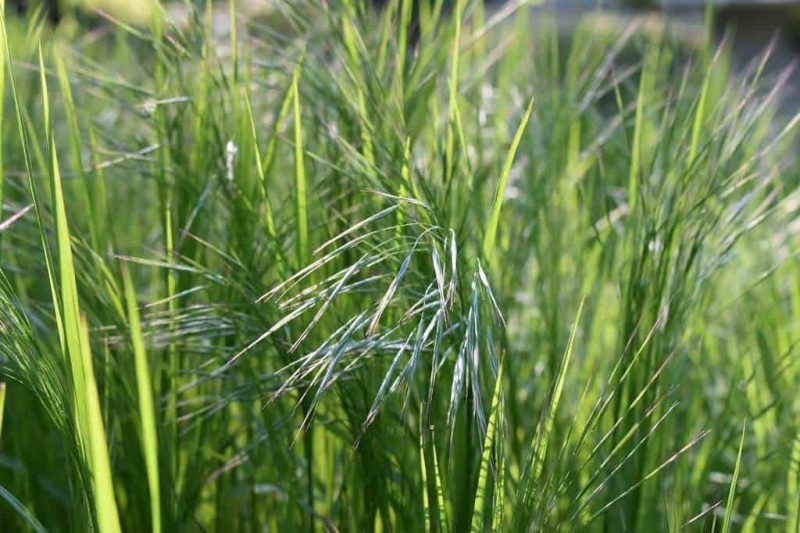You can simplify the answer on how to separate ornamental grasses into two steps. However, remember to know the ornamental grasses you have as small and large types. They will have techniques unique to them to make separation easier.
With a proper understanding of the species and their growth habits, you’ll have an easier time separating them and produce more plants. Knowing how to divide and grow ornamental grasses is an excellent way to make more plants from your existing grasses. More so, dividing reduces the clump’s size, which is part of the grasses’ maintenance practices.

Separating or dividing ornamental grasses helps them maintain their health, and you also get to keep a tidy landscape.
How To Separate Ornamental Grasses Successfully
The key to successfully separating ornamental grasses is by identifying the type of plants. The process itself requires knowledge of the difference between small and large ornamental grasses and warm-season and cool-season grasses. More so, check the species that you have since it can have specific requirements for separation.
Step #1. Removal
In general, both small and large ornamental grasses have the same concept in removal. You’ll benefit from watering the grasses thoroughly to make it easier to lift them with a shovel or spade. However, below are some additional tips to make removal and separation easier for specific grasses.
Small ornamental grasses
After watering the grasses, it should be easy to dig up the plant using a shovel. You can also hose the loose soil around the roots and remove damaged parts from the plant, including leaves and roots.
Large ornamental grasses
Larger ornamental grasses will require some cutting back before you dig up the clump. This way, it’s more comfortable for you to successfully see the roots and dig up the grass. You can fully dig up the root ball, but you may also find it convenient to divide it in half with a shovel before lifting.
Once you have the sections, spray them with a hose to remove the residual soil.
Step #2. Dividing
As previously discussed, you can immediately divide larger ornamental grasses without lifting the rootball from the ground. The process of separating ornamental grasses is similar on both grass types, but you might benefit from the techniques below to make it more comfortable.
Small ornamental grasses
You can use your hands and divide the rootball into sections, and you can get as many divisions depending on the size of the plant. When you’re planting a division, ensure that it is stable upright with roots spreading out in its new container. Then, water the new plants and maintain moisture until they established themselves after a few weeks.
Large ornamental grasses
You can immediately cut the root ball in half in the ground with large ornamental grasses or do so after lifting, depending on what is more comfortable. Unlike with smaller grasses, you may need an ax to separate larger grasses. Once you have the sections, you have to remove those close to the center as these divisions are old and may not be vigorous for transplanting.
You must also remove the long roots and those damaged before you transplant them similarly with small ornamental grasses. Whichever type of grass you have, you may also find it easier to get them established in the greenhouse. The greenhouse makes an excellent environment for propagation because it is stable for young plants.
When to separate ornamental grasses
It’s not enough to know how to separate ornamental grasses because proper timing is crucial for success. Once again, you can identify two types, but this time, separate warm-season and cool-season grasses. Knowing when they are actively growing makes it easier to separate them because you want to do so before this period.
Warm-season grasses
You must divide warm-season grasses in spring because they are just about to start the growing season, and they are no longer dormant at this period. Warm-season grasses are dormant in fall, and the growing season begins when they develop new shoots. An indication that you have a warm-season grass is if it typically flowers in mid-summer or early fall.
Cool-season grasses
On the contrary, it’s best to separate cool-season ornamental grasses late in winter to early spring because this is the time that they are about to grow actively. However, do note when your grasses grow as these recommended times may vary. Remember that cool-season grasses develop new growth in fall or winter, and they go dormant when it goes over 75°F.
Conclusion
Ornamental grasses will benefit from dividing here and there. Learning how to separate ornamental grasses is not only important for propagating new plants, but it also keeps them healthy and your garden looking neat. The process itself is as simple as removal and dividing and also identifying when to separate grasses.
For removal and dividing, you must identify first if your grasses are small or large. The latter may need some cutting back before digging out, while smaller grasses are easy to divide by hand. It would also be best to separate warm-season and cool-season grasses to know when they’re about to grow and divide before those times actively.
